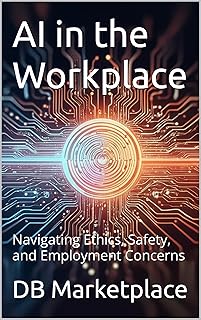A transformative path unfolds as artificial intelligence reshapes companies and redefines corporate learning and development. The journey towards seamless human-AI collaboration in the workplace of the future is explored in this article, shedding light on how L&D serves as a strategic guide through this evolving landscape.
The history of human-technology interaction has witnessed initial apprehension giving way to embracing technology as a facilitator of life. The evolution from skepticism to reliance on technology, particularly in integrating AI into businesses, underscores the transformative potential of AI in creating prosperous opportunities and global competitiveness.
The impact of the AI revolution on life and employment hinges on the collaborative relationship between humans and AI. Enabling employees to thrive in an AI-enhanced environment is a pivotal role for HR and L&D in shaping a promising future of coexistence and cooperation between human intelligence and AI capabilities.
In navigating this transition, HR and L&D must collaborate to establish a symbiotic connection between human expertise and AI capabilities within modern organizations. Strategic reskilling and upskilling programs play a crucial role in empowering employees to adapt to the evolving AI landscape.
Reskilling involves equipping employees with new skills to transition into roles emerging from AI integration, while upskilling focuses on enhancing existing skill sets to align with AI-driven changes in current roles. Both strategies are essential for organizations to navigate the dynamic demands of the AI era.
Designing effective upskilling initiatives requires addressing short-term skill gaps and establishing long-term plans aligned with organizational objectives. Collaboration with technology leaders is crucial in selecting tools and resources to support continuous skill development and innovation.
Reskilling programs, exemplified by initiatives like Amazon’s Machine Learning University, offer companies a strategic advantage in balancing workforce demands with technological advancements. By investing in reskilling, organizations can leverage employees’ latent potential and adapt to the evolving requirements of an AI-driven future.
L&D’s pivotal role extends to preserving and transferring human expertise to AI systems, enriching AI algorithms with the depth of human knowledge. The integration of human insights into AI models requires a collaborative effort to capture and embed years of experience and domain-specific knowledge into AI frameworks.
AI-powered tailored training programs enhance individual skill development by providing customized learning paths tailored to each employee’s needs and learning preferences. Leveraging AI tools enables trainers to deliver personalized learning experiences, optimizing skill development and fostering continuous growth.
As organizations embrace an AI-first future, fostering a culture of continuous learning and knowledge sharing becomes imperative. Proactive engagement from leadership, creating a learning-friendly environment, and promoting responsible AI use are essential components in maximizing the benefits of AI transformation.
In conclusion, the AI revolution presents an opportunity for organizations to transform challenges into opportunities by fostering a culture of lifelong learning and preparing employees to coexist harmoniously with AI. Strategic collaboration and proactive initiatives across all levels of the organization are key to ensuring a sustainable and innovative future in the age of AI.
📰 Related Articles
- Wikipedia’s Future Amid AI Disruptions and Misinformation Challenges
- Galileo Learn™ Revolutionizes Corporate Training with AI Integration
- AI Transforms Education for Hong Kong Families, Tailoring Learning Experiences
- Young Harness Racing Talent Ryan Backhouse Drives Success with Stellar Performances
- World Bank’s Role in Enhancing Remote Learning Strategies Globally




